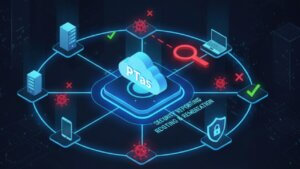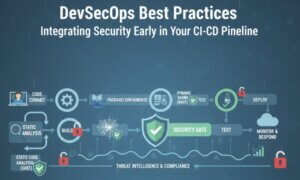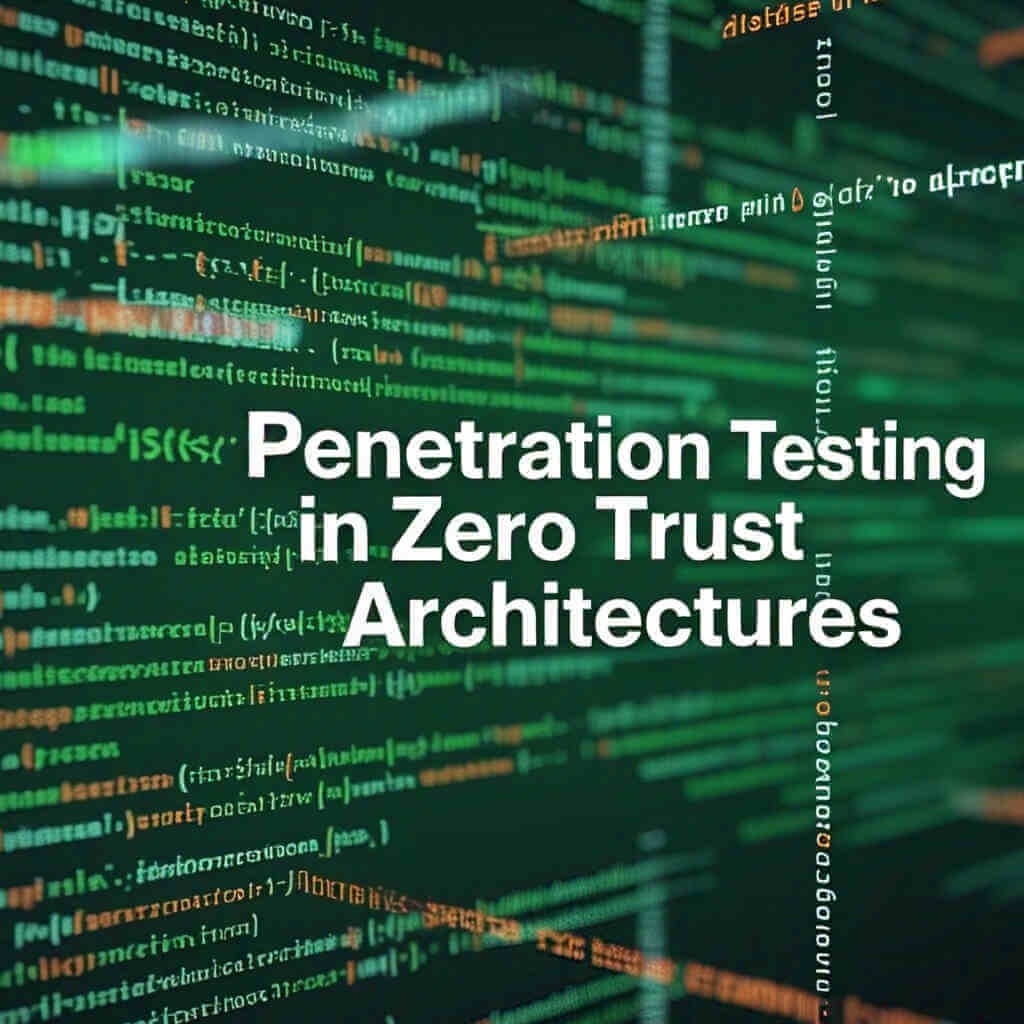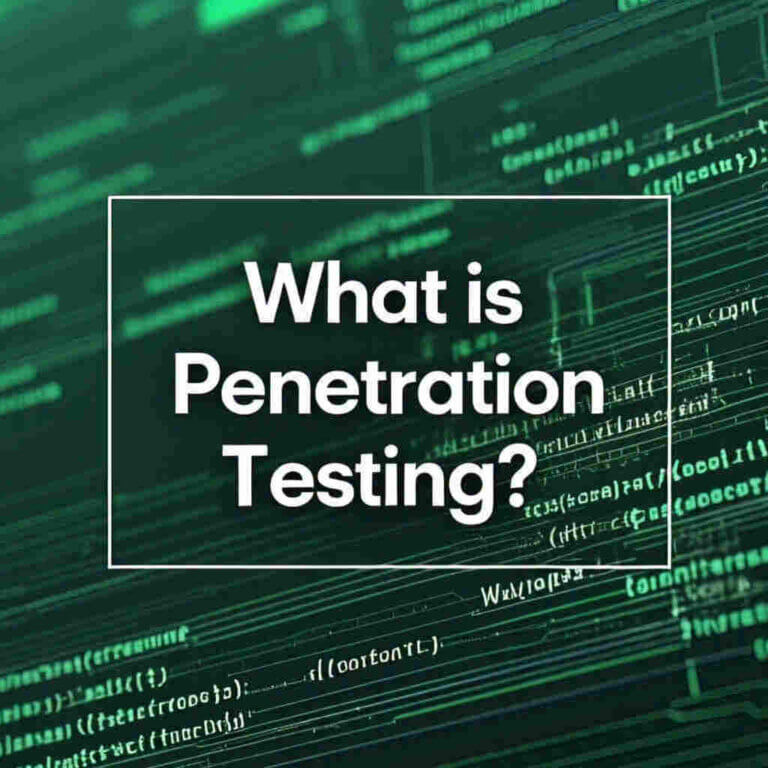As the saying goes “trust is a vulnerabilty, verify everything always!”. In a world of breaches, zero trust is the only truth. The Zero Trust model has become a fundamental framework for protecting modern networks. Traditional security paradigms relied on perimeter-based defenses, but with increasing cyber threats, remote work, and cloud adoption, the “never trust, always verify” principle of Zero Trust has gained prominence. However, implementing Zero Trust does not eliminate the need for rigorous security testing. Penetration testing remains an essential practice to validate Zero Trust architectures, identify gaps, and reinforce security resilience. This blog explores how penetration testing aligns with Zero Trust, the challenges involved, and the best practices for security professionals in 2025
Table of Contents
Understanding Zero Trust Architecture (ZTA)
Zero Trust Architecture (ZTA) is a security framework that assumes no entity, inside or outside a network, should be trusted by default, requiring continuous verification of every access request. It enforces strict access controls, least-privilege principles, and multi-layered authentication to minimize security risks. Key principles of ZTA include:
Least Privilege Access: Users and systems get only the minimal access necessary to perform their functions.
Micro-Segmentation: The network is divided into smaller segments to contain potential breaches.
Continuous Authentication and Authorization: Real-time monitoring and adaptive authentication ensure secure access.
Assume Breach Mentality: Security strategies are designed with the assumption that attackers may already be inside the network.
While ZTA enhances security, it is not immune to vulnerabilities. Penetration testing helps organizations proactively discover weaknesses and refine their Zero Trust implementations.
The Role of Penetration Testing in Zero Trust Environments
Penetration testing (pentesting) in a Zero Trust environment assesses the effectiveness of security controls by simulating real-world attack scenarios. This testing is crucial for:
Identifying Weak Links in Access Controls: Pentesters evaluate whether unauthorized users can bypass authentication or exploit weak permissions.
Testing Micro-Segmentation Effectiveness: Simulating lateral movement within a segmented network helps assess containment strategies.
Validating Identity and Access Management (IAM) Systems: Security professionals test for authentication flaws, privilege escalation risks, and improper session handling.
Assessing Cloud and Hybrid Environments: Since Zero Trust is often implemented across on-premises and cloud infrastructures, pentesters examine how data flows securely between environments.
Evaluating Endpoint Security Measures: With Zero Trust’s focus on device verification, pentesters analyze endpoint vulnerabilities, including misconfigurations and outdated software.
Challenges of Penetration Testing in Zero Trust
Pentesting in Zero Trust environments introduces unique challenges:
Dynamic Security Policies: Zero Trust systems often use adaptive security policies that change based on user behavior and context. This makes it difficult to establish a fixed testing methodology.
Limited Lateral Movement: Traditional pentesting techniques rely on lateral movement, but micro-segmentation and strict access controls can restrict exploratory attacks.
Continuous Monitoring and AI-Driven Security: AI-powered security systems may detect penetration testing activities as real threats, triggering automated responses that hinder testing.
Integration with DevSecOps Pipelines: As security shifts left in the development process, pentesters must collaborate with DevSecOps teams to test Zero Trust implementations efficiently.
Best Practices for Penetration Testing in Zero Trust Environments
To overcome these challenges and ensure effective penetration testing in Zero Trust architectures, organizations should adopt the following best practices:
1. Define Clear Testing Objectives
Before conducting a penetration test, organizations must establish clear goals that align with their Zero Trust implementation. These objectives may include testing:
Authentication mechanisms
Network segmentation effectiveness
Access control policies
Cloud and hybrid security configurations
2. Leverage Red Team and Purple Team Exercises
Red team exercises simulate real-world attacks, while purple teaming fosters collaboration between red and blue teams to improve detection and response. Combining these approaches enhances security resilience in Zero Trust environments.
3. Use AI and Automation for Advanced Testing
AI-driven penetration testing tools can analyze vast datasets, identify patterns, and simulate attack scenarios more efficiently. Automated tools help scale testing efforts without compromising effectiveness.
4. Test Continuous Authentication and Zero Trust Identity Controls
Since identity is a cornerstone of Zero Trust, pentesters should evaluate:
MFA bypass techniques
Session hijacking risks
Weak password policies
Social engineering vulnerabilities
5. Assess API and Cloud Security
Zero Trust heavily relies on APIs and cloud integrations. Penetration tests should include:
API authentication flaws
Cloud misconfigurations
Data exfiltration risks
Compliance adherence (e.g., NIST 800-207, CIS benchmarks)
6. Simulate Insider Threats
Zero Trust assumes that insider threats are just as dangerous as external attackers. Pentesters should simulate malicious insider activities to test:
Data exfiltration attempts
Privilege escalation attacks
Abuse of legitimate credentials
7. Regularly Update and Adapt Testing Strategies
As Zero Trust policies evolve, penetration testing strategies must adapt. Continuous security assessments ensure that new risks are identified and mitigated proactively.
Future Trends in Penetration Testing and Zero Trust (2025 and Beyond)
With Zero Trust Architecture (ZTA) becoming the standard, penetration testers can no longer rely on flat networks or assumed trust. Every access request is verified, micro-segmentation limits lateral movement, and behavioral analytics detect anomalies in real time. Future pen tests will need to simulate identity-based attacks, API vulnerabilities, and policy bypasses rather than just exploiting weak firewalls.
AI-Augmented Pentesting: Machine learning algorithms will enhance automated penetration testing, making it faster and more precise.
Cloud-Native Pentesting: Security testing will focus more on cloud-native applications, serverless computing, and containerized workloads.
Zero Trust for IoT and OT Security: With the rise of IoT and operational technology (OT) security concerns, penetration testing will expand to include non-traditional IT environments.
Quantum-Resistant Security Testing: As quantum computing threats emerge, penetration testing will assess cryptographic resilience against quantum attacks.
Conclusion
Zero Trust Architecture is a powerful security model, but its effectiveness depends on continuous validation. Penetration testing plays a critical role in identifying vulnerabilities, testing security controls, and ensuring compliance with Zero Trust principles. As organizations embrace Zero Trust in 2025, adopting best practices and leveraging cutting-edge pentesting methodologies will be essential for maintaining a robust cybersecurity posture. By integrating penetration testing into Zero Trust frameworks, businesses can proactively strengthen their defenses against the ever-evolving threat landscape.
Why Businesses Trust SecureMyOrg for Comprehensive Network Security
At SecureMyOrg, we uncover and fix all possible security vulnerabilities of mobile and web, while providing solutions to mitigate risks. We are trusted by renowned companies like Yahoo, Gojek and Rippling, and with 100% client satisfaction, you’re in safe hands!







Some of the things people reach out to us for –
- Building their cybersecurity program from scratch – setting up cloud security using cost-effective tools, SIEM for alert monitoring, building policies for the company
- Vulnerability Assessment and Penetration Testing ( VAPT ) – We have certified professionals, with certifications like OSCP, CREST – CPSA & CRT, CKA and CKS
- DevSecOps consulting
- Red Teaming activity
- Regular security audits, before product release
- Full time security engineers.
Relevant Posts

AI-Powered Phishing Emails: 7 Ways to Spot and Stop Them Before They Strike
Penetration testing as a service (PTaaS) lets experts simulate real attacks to uncover vulnerabilities before hackers do. This guide explains the process, benefits, and costs, helping businesses strengthen defenses with predictable, ongoing security checks.

Why Regular Penetration Testing is Essential for Modern Companies
Penetration testing as a service (PTaaS) lets experts simulate real attacks to uncover vulnerabilities before hackers do. This guide explains the process, benefits, and costs, helping businesses strengthen defenses with predictable, ongoing security checks.

What Is Penetration Testing as a Service?
Penetration testing as a service (PTaaS) lets experts simulate real attacks to uncover vulnerabilities before hackers do. This guide explains the process, benefits, and costs, helping businesses strengthen defenses with predictable, ongoing security checks.

How To Inspect Encrypted Traffic Without Breaking Privacy
Network administrators face a challenge: securing systems while respecting privacy. This guide explains how to inspect encrypted traffic without breaking privacy using metadata, anomaly detection, and machine learning ensuring visibility, compliance, and trust.

How to Audit Infrastructure as Code (IaC) for Security Vulnerabilities
Discover how to audit Infrastructure as Code (IaC) for security vulnerabilities with this practical guide. Learn to scan IaC files using tools like Checkov, fix issues like exposed resources, and integrate audits into CI/CD pipelines. Protect your cloud systems from misconfigurations and ensure compliance with clear, actionable steps.

DevSecOps Best Practices: Integrating Security Early in Your CI/CD Pipeline
This article provides a practical guide to embedding security into every stage of your CI/CD pipeline. Learn core DevSecOps best practices like SAST, DAST, dependency scanning, secrets management, and compliance automation to catch vulnerabilities early, foster a culture of shared ownership, and build a secure-by-design development process that accelerates release cycles.



